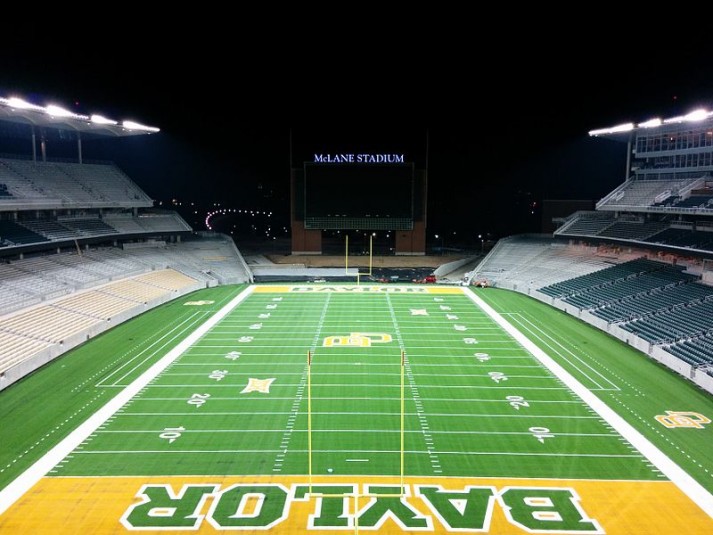The Line Between Broadcast and Venue Audio Is Blurring
Sports producers seek consistent sound on the air and in the stands
Story Highlights
The line between the in-venue experience and the broadcast experience has been getting thinner in recent years. The blurring was noticeable on a grand scale during the 2014-15 NBA season, when Turner Sports collaborated with the league and the venues’ live-sound-system operators to improve both the fan experience and the effects audio for the broadcast, bringing some of each into the other’s domain. The result was that those in the upper reaches of the seats were able to hear the same sneaker squeaks and dribble sounds that are consistently part of the television soundscape.
At the time, Turner’s audio staff consulted with venue audio personnel on such aspects as system tuning, equalization, frequency response, pattern coverage, and sound-pressure level (SPL) in an effort to optimize the sound in the arena and, by extension, the audio on television: for instance, by reducing acoustical reflections that impair the intelligibility of announcements.
CLICK HERE for photo gallery of latest venue audio renovations.
Less ambitious implementations include putting quick broadcast interviews on venue video displays during breaks in the action.

At Baylor University’s McLane Stadium, broadcast sound effects can be routed to the VIP suites and clubs.
“I’ve been seeing more of that happening, with small snippets of the broadcast integrated into the game in the arena,” notes Dave Howden, director, technical services, for loudspeaker manufacturer Community Sound. “It’s usually something as a simple as a 60-second interview at the end of the quarter, but it’s effective. It flows like it does on TV. It feels familiar.”
Better Technology
According to Howden, who also mixes the in-venue sound for all Philadelphia Eagles’ home games at Lincoln Financial Field and a couple dozen Phillies baseball games each season at Citizens Bank Park, improvements in the precision of sound coverage have helped enable this trend. He notes that it hews to the cultural curve that has seen sports events move closer to entertainment.
However, he finds that it seems to work best in enclosed spaces, such as arenas. “We tried piping the studio broadcast into the stadium for the Eagles. That lasted about two games,” he deadpans. “And I’ve never seen it at an MLB stadium, but they seem to love it for hockey and basketball.”
That kind of aural cross-pollination requires planning and a deft hand on the faders.
“You need to zone the audio as much as possible,” he explains. “If you’re taking a live feed to broadcast and to the house, you need to isolate [the area] where the network talent would be. You need to reduce the amount of [sonic] energy that gets over there, by attenuating the speakers nearest them, in order to have a cleaner broadcast mix.” What also helps, he adds, is that talent areas tend to have the budgets allocated to apply useful acoustical treatment, which further manages sound levels and reflections.
Brian Elwell, senior consultant/VP at AV-design firm Idibri, whose sports portfolio includes Dodger Stadium and Circuit of the Americas F1 track in Austin, TX, notes that the trend of overlapping sound for live and broadcast has increased steadily in recent years, with fans in the stands and suites deriving the biggest benefit, getting more of the sound effects that have become a foundational part of sports on television.
“Getting those effects back from the [remote-broadcast production] truck and into the PA is what I want to hear as a fan,” he says, citing motor sports in particular. “We’ve always provided pathways and distribution amplifiers in our [system] designs for the broadcast-audio engineers to be able to send anything from the truck back into the venue.”
Elwell points out that, in some venues — Baylor University’s McLane Stadium in Waco, TX, for instance — the system design allows broadcast sound effects to be routed to the VIP suites and clubs.
Not for Everyone
Where a caution flag comes up, however, is in the other direction: when too much sound from the venue finds its way into the broadcast. Which is why broadcast-audio mixers tend to take a dim view of the practice.
Fred Aldous, senior mixer, Fox Sports, is one of them. “The biggest problem with this is that the PA bleeds back into our effects mics and announcer mics, causing an unwanted sound and potential feedback,” he explains. “The PA levels have gotten so loud that it is hard enough for us to get sounds from the court without having to fight the sound of the ‘swish’ mics being pumped in as well.”
Elwell also notes World Cup events, particularly the 2010 World Cup game in South Africa when the notorious vuvuzelas drowned out commentators’ voices, as a prime example. “At home, the announcer is more important than the crowd sound,” he says. “There are certain limits you have to stay within. But, if you do, everyone wins.”
